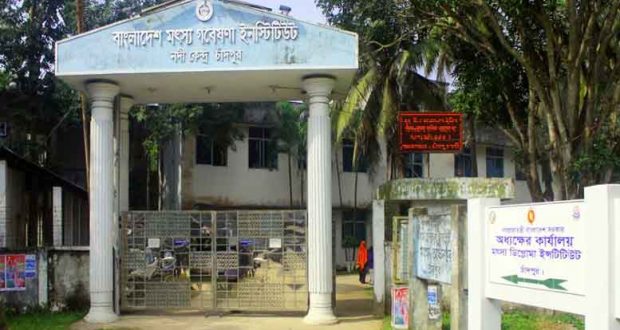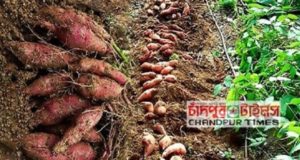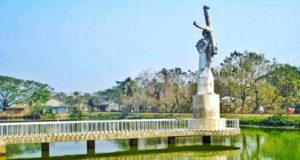Hilsa production has increased manifold in 20 years.Bangladesh Fisheries Research Institute was established in 1984 .Chandpur river center with 17 hectare area adjacent to the Chandpur-Comilla Regional Highway in the city’s Warlass Market area. The institute has studied about 20 new methods, including improved fish species, to increase fisheries research by studying this institute for a long period of 17 years.
Which is making outstanding contribution to meet the needs of the people of the country. Particularly due to the relentless efforts of the researchers of this institute, the production of hilsa has increased manifold in the last 20 years.
Researchers from the Chandpur River Center’s study on the increase in threatened hilsa production increase the production of hilsa in a few years, which is rare in other countries of the world. At present, Bangladesh is now a role model in hilsa production. Bangladesh has achieved Geographical Indication in 20 years in addition to the success of ‘ELISH’ research.
Not only that, the organization is working to alleviate poverty by creating new employment along with fisheries. At the center of the river there are five permanent ponds, a hatchery and a boat with research equipment for survey and experimental fishing in the river.
According to sources, the Bangladesh Fisheries Research Institute, Chandpur, has established three institutions, namely, the river water fisheries research center, technological laboratory and limnological disease lab. As a result, Chandpur is the center of five centers, including the headquarters of the Fisheries Research Institute.
There are two other research centers as sub-centers of the Chandpur river station. These are – Rangamati District, Rangamati District, and Rangamati and Khepupara, the suburban rivers located in Patuakhali district.
Fisheries and management are being studied at Kaptai Lake and the management of the hilsha fish in the Kepupara sub-center at Rangamati River, which is under Chandpur river station. The institute is being run on various aspects of the proper management and development of the fishery species, which are of economic importance to the internal free waters.
Up to 2020, the Chandpur River Center has researched and developed various techniques of fish farming, including advanced varieties of fish. The Elisha in particular have begun a breakthrough chapter in the protection of wealth. The fish are playing an important role in the country’s GDP.
New technologies developed from the Chandpur River Center include hull resource conservation techniques and management, single and mixed farming technology for pangas cultivation in ponds, artificial breeding and breeding of Thai pangas cultivars, pellet breeding in domestic hatcheries, single and mixed shrimps in ponds. Farming of fish in paddy fields, assessment of pesticide poisoning on fish and aquatic environment, organic business of Kaptai lake Thapana and theoretical study of water, cage tilapia fish farming, pollution of rivers, water renewal and study, research and management of fish, fish rearing and research pangasera, Thailand pangasera fish fry production and farming, among others.
In recognition of this success, according to a report of the United Nations Food and Agriculture Organization, Bangladesh ranks third in the world in fish farming in the open and third place in fresh water production.
According to the source, all the fish produced in the country in the 2018-19 financial year of the financial year 42,77000 MT. Out of which, the production of hilsa was 5,17000 MT. Meanwhile, in Chandpur district, 56,946 MT. against the demand of the production is 99,987 MT.
In addition, Chandpur River Center received the National Award multiple times in recognition of its contribution to the fisheries of the country. Silver medal for Thai pongas fish production in 2010, gold medal for improved breed of fish in 2018 and gold medal at the continuation of increase in production of hilsa.
Already, the unprecedented success in hilsa production has led to Chandpur district branding known as ‘City of Hilsa’. Scientists at the river center have even invented the successful breeding of the first Thai pangas, the management and planning of fish fish and the cultivation of fish in cages.
According to data from the Fisheries Department’s Fisheries Resources Survey method, the production of hilsa in the country was 2.14 lakh MT, in the 1998-99 financial year, it increased to 2.19 million MT. in the 1999-2000 financial year. Production decreased to 2.29 million metric tons in the fiscal year 2000-2001, production decreased to 2.2 million MT. in fiscal year 2001-2002 and the production of hilsa decreased to 1.99 lakh MT in fiscal year 2002-2003.
Subsequently, production of hilsa has increased steadily every year since Jatka and Maa took over the hilsa conservation program in the 2007-2008 financial year. During the year 2012-13, the production of hilsa increased to 3.51 lakh MT. from 2013-2014 years to 3.85 million MT. during the year 2014-2015, the production of hilsa increased to 3.87 lakh MT. In the fiscal year 2015-16, the production of hilsa increased to 3.94 lakh MT. the production of hilsa was 5 lakh MT. in the 2016-17 financial year and the production of hilsa stood at 5.17 lakh MT. in the 2018-19 financial year.
Dr. Anisur Rahman, Chief Scientific Officer of the Bangladesh Fisheries Research Institute Chandpur River Center and the only hilarious researcher in the country, said, ‘In the long run, the institute has developed several new technologies. Due to the participation of all stakeholders including the Department of Fisheries under the guidance of the Ministry of Fisheries and Livestock, the production of hilsa has not only increased steadily but also in size. Delicious hints are now available on the river almost every year’.
Shariful Islam,February 04,2020
 Chandpur Times Top Newspaper in Chandpur
Chandpur Times Top Newspaper in Chandpur



